The History of the Giglio Festival
By Ian MacAllen on Sunday, July 7th, 2024 at 3:27 am | 3,508 views
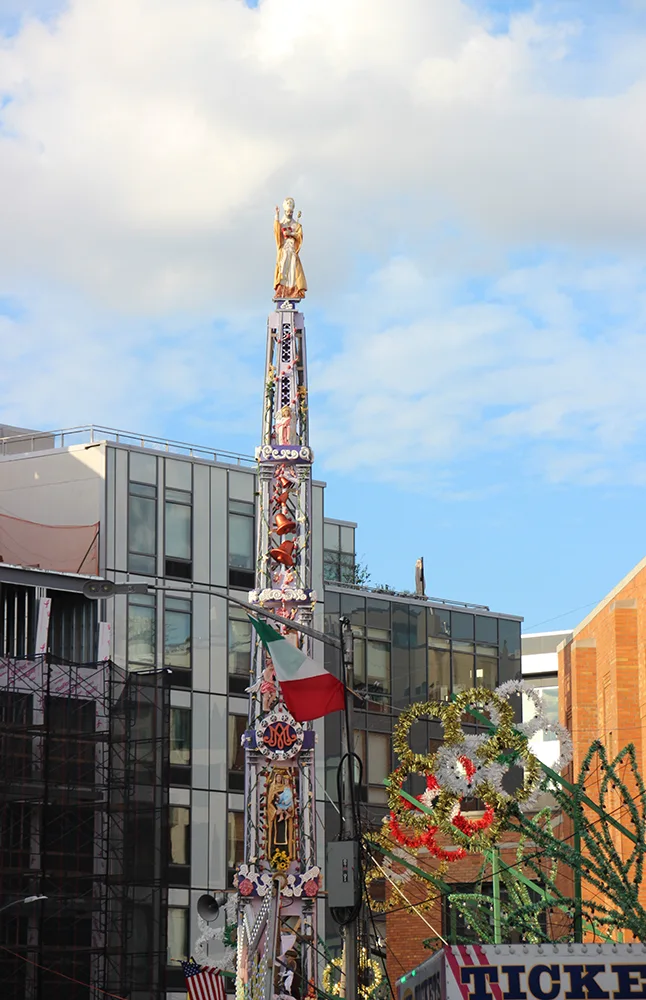
Williamsburg, Brooklyn has risen to prominence in recent years as an upscale bohemia, a “SoHo East” with global luxury brands and glitzy waterfront apartments. But a few blocks east is the historically Italian enclave centered around the Lorimer and Graham Avenue subway stops. Historically a working class neighborhood, North Brooklyn’s Little Italy hosts one of the oldest Italian street festivals in America, the annual Giglio Festival.
Italian immigrants began arriving in Williamsburg as early as the 1860s at the beginning of the Italian diaspora. When the Williamsburg Bridge opened in 1903, Italians living in the tenements of the Lower East Side also relocated to the area around Graham Avenue. Many of the immigrants arrived from Compania, the province surrounding Naples, with a particular emphasis on villages of Nola and Saviano. In 1897, the community built the parish church, Our Lady of Mount Caramel. It was the second parish church serving the growing community, and what is now the focal point of the modern feast.
The Italians who settled in Williamsburg began setting up mutual aid societies. These social organizations typically assisted with the cost of burials for their members. The societies themselves consisted of people who departed from the same village in Italy, pisans and cousins who had a shared cultural heritage. Each organization celebrated the local saints and followed the unique traditions of communities they left behind replicating the processions, street fairs, festivals, and the ceremonies that today would feel particularly old world.
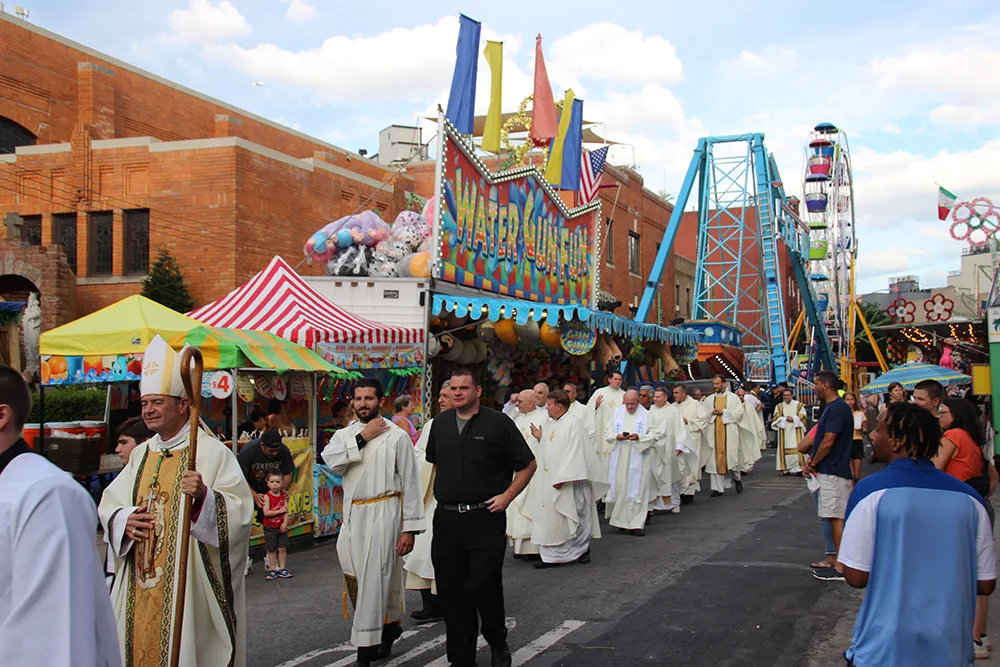
The immigrants from Nola created Societa M.S. San Paolino in 1903 and organized the first feast that same year. Festivals not only honored saints, but raise money for the sponsoring organizations. For the first four decades, the festival was held on June 22, the traditional feast day of St. Paolino and run entirely by the society.
A Festival With Italian Origins
The Giglio feast originates in Italy, from the town of Nola, where the festival is a religious celebration of the city’s patron saint, Paulinus or Paolino. Paolino served as Bishop in the 5th century. The decline of the Roman Empire was well underway and as the Visigoths moved south, and invaded Nola. Citizens of the town were taken as slaves.
Paolino sold assets to recover the prisoners, and when the only son of a widow was captured and sold to a king in North Africa, he offered himself in exchange. Paolino served as a gardener, and developed a reputation for making prophecies. After befriending members of the court, Paolino eventually became acquainted directly with the king.
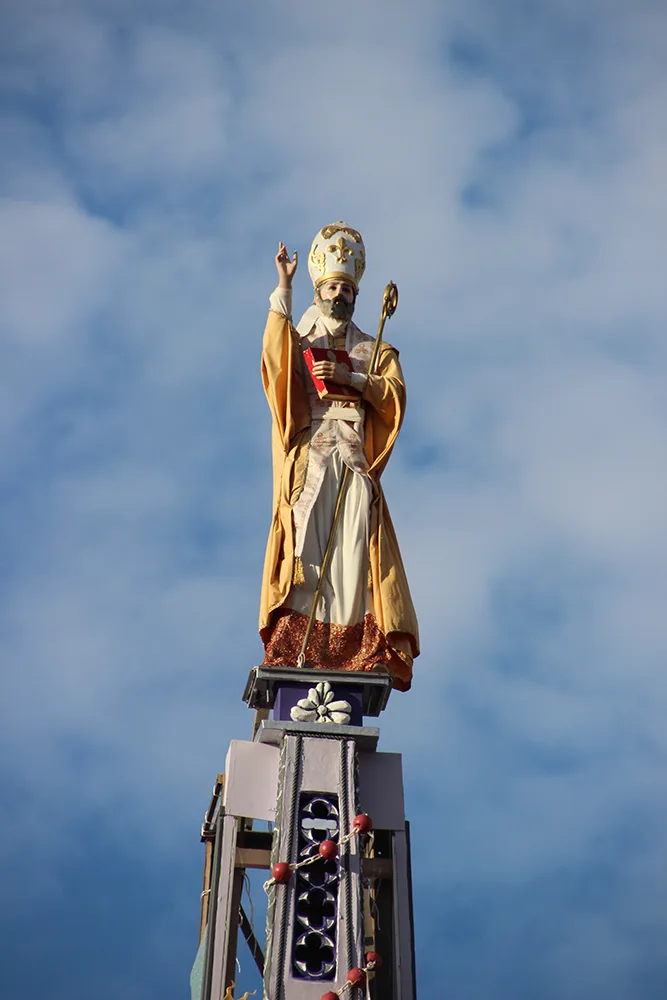
Among the prophecies, Paolino foretold the death of the king. When the king questioned Paolino, he confessed to being a Bishop from Nola. Hoping to save himself, the king wished to grant Paolino whatever he asked for, and so Paolino requested he and the other prisoners of Nola be returned to their village.
The king sent Paolino and the Nola citizens back to Italy, along with boats filled with grains as reparations. Upon his return, the people of Nola welcomed Paolino home with lily flowers, the symbol of the feast today. Following his death, people brought bouquets of lilies to the saint’s burial plot.
Centuries later, in the Renaissance era, the city’s guilds began the tradition of creating towers, known as the gigli, the lilies. By the 19th century, the spires were constructed of papier-mâché and regularly stood 80 feet tall. In Italy, the feast is held on June 22, the Saint’s feast day and includes 8 spires each representing one of the original guilds supporting the festival as well as a boat, symbolizing the ship that rescued Paolino. A festival has been held in Nola for more than a thousand years, with exceptions during World War II and the COVID pandemic.
Recreating The Festival in Brooklyn
The immigrants from Nola brought with them the tradition of building the Giglio tower, a practice dating back centuries in Italy. The heavy tower is part of the Giglio dance, a set of rhythmic movements where more than a hundred men lift the tower and shift it into position.
World War II disrupted the annual feast, in part because the men responsible for lifting the towers had been sent overseas. During the same period, other changes were happening too. A new brick church was under construction, and the Brooklyn Queens Expressway’s elevated viaduct bisected the neighborhood.
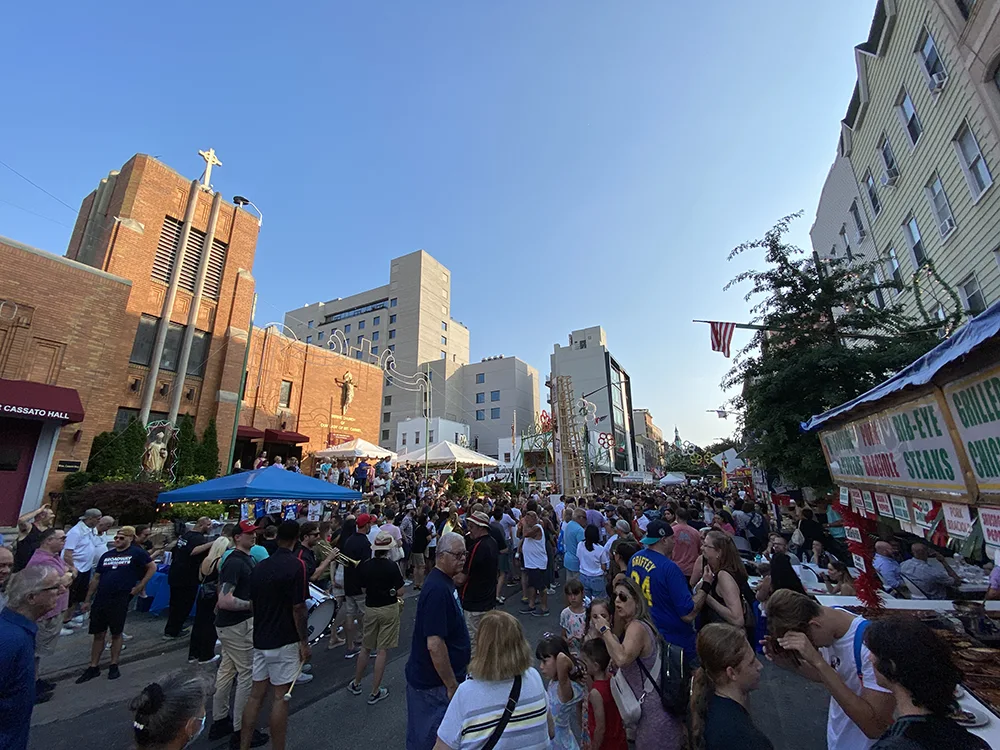
According to I. Sheldon Posen and Joseph Sciorra, this is when trouble began. The parishioners of Our Lady of Mount Caramel attempted to take control of the annual festival. In 1950, a rival society, Societa San Paola, hosted a feast. The new organization consisted of Italian Americans – people born in the states rather than in Italy.
During this time, the church itself held a festival in mid-July. Eventually, in 1954, the various groups came together to hold a “Cooperative Feast” combining the two festivals into one. Today, the festival starts midweek and spans two weekends in July.
By the late 1950s, the feast was attracting 20,000 people, with as many as 200 people lifting the 90 foot tall towers. The festival included food stands selling spumoni, zeppole, and pizza. In addition to the lifts, there were other events. In the 1970s and 1980s, the feast hosted an Old-Timer’s stickball tournament.
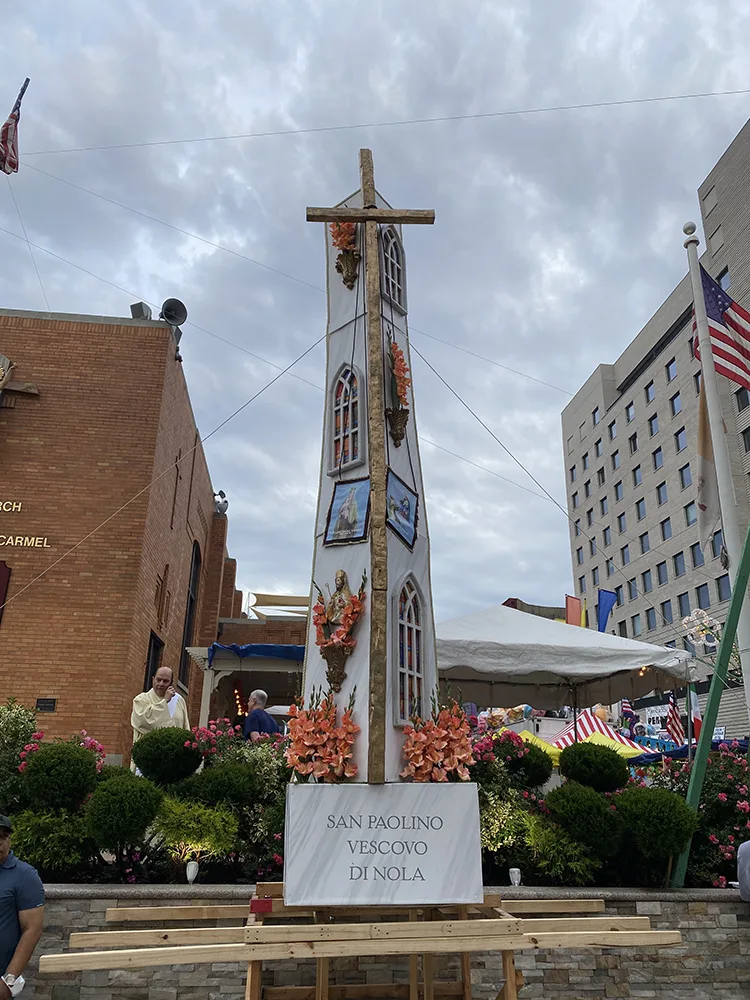
A short documentary from 1995 about the feast highlights the festival and several of the men responsible for lifting the towers. In it, they explain the system of capos.
The lifters are organized into groups known as paranza and led by “capos.” There is a sophisticated hierarchical system that takes years to ascend with capos, apprentice capos, and lieutenants each having a mandatory number of years before promotion.
Other Italian American Giglio Festivals
Brooklyn’s Giglio feast appears to be the oldest in the United States, but there are others in the tri-state area.. Astoria in Queens and Arthur Avenue’s Little Italy in the Bronx have both hosted festivals featuring towers, with the first of these spires made by the same people involved in Williamsburg.
There have also been giglio feasts hosted in the tri-state area. In Fairview, New Jersey, festivals were held periodically. A festival in 1972 featured an 85-foot tower, but before that had been last held in 1952. In West Hempstead on Long Island, a Giglio festival was established in 2006, and is regularly held in June. Other festivals featuring the gigli spires have appeared and disappeared in communities throughout the region.
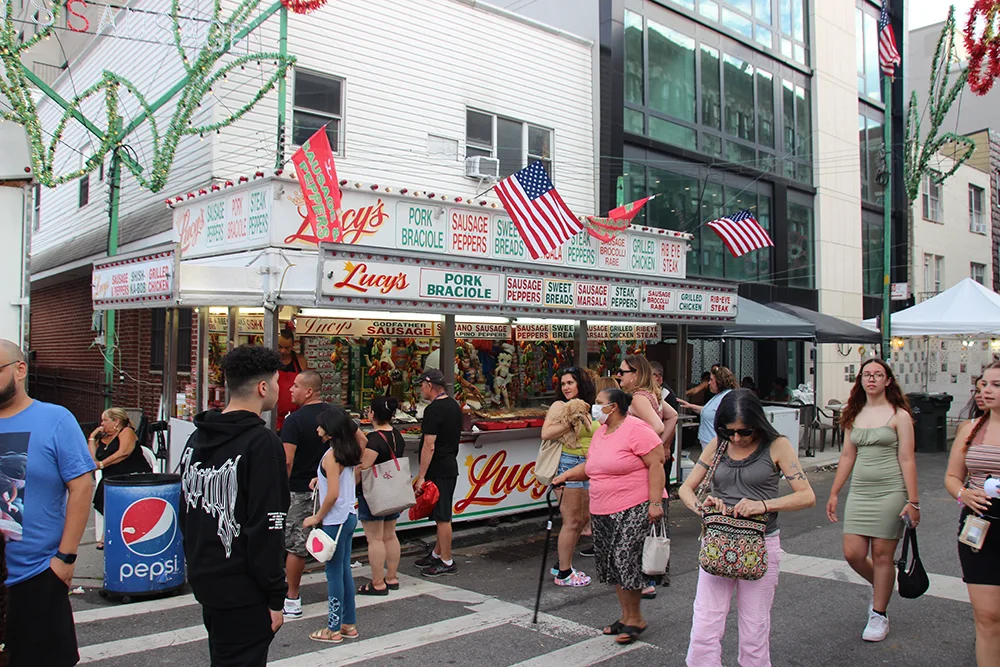
In East Harlem, the first giglio festival was held in 1908. The immigrants here were not from Nola, but instead the nearby community of Brusciano. The festival and dance are made in honor of Saint Antonio of Padua, after Francisco Vivolo vowed to honor the saint. In Brusciano, Italy, six towers are typically involved in the festival. Although the first East Harlem feast is nearly as old as the Brooklyn festival, there have been gaps lasting decades between feasts.
Despite the many other giglio festivals in the past, in 2020, during the global pandemic, only Brooklyn kept the tradition going. The other festivals have since returned, but for one year, Brooklyn was the only place to see the dance of the giglio.
Iconic Towers of the Giglio
The hallmark of the festival is the tiered towers decorated with symbols, figures like San Paolino, and flowers. The structures have roots in pagan rituals meant to evoke enlarged trees symbolizing fertility and prosperity. As with many of the rituals in Italian Catholicism, Christianity co-opted the symbolism to mean devotion and love for the saint instead.
Structures may have been constructed as early as the renaissance, but were likely smaller and disposable annually. The gigli used today in Italy are similar to the ones developed at the end of the 19th century when they became fixtures of the event. Trade guilds invested in the towers representing grocers, Salumiere, tavern keepers, bakers, butchers, shoemakers, blacksmiths and tailors, leading to the 8 towers seen in Nola’s festival.
In 1887, a tower structure was developed where a wood frame was covered with papier-mâché. The technique was imported from Puglia, originally for decorations of the city’s Duomo. In Brooklyn, a similar system was used in the first decades of the festival, and the skilled craftsman built similar towers for feasts in Astoria and the Bronx. Since 1966, Brooklyn’s tower has been made of aluminum.
The towers used in the festivals vary by height. In the Bronx, they have been as short as 50 feet high. Williamsburg’s towers range from a reported as 60 feet to as high as 90, but have been regularly reported as 70 feet tall. They required anywhere from a hundred to two hundred people to lift.
The style of the towers in the festival is similar to the famed Watts Towers in Los Angeles, a collection of seventeen sculptures by the artist Sabato Rodia. Rodia was born in Saviano, a small commune next to Nola, in 1879. He left for the United States at age of fourteen, around 1895. He began the construction of the towers around 1921.
The tallest of Rodia’s towers is just under 100 feet tall, and the sculptures even include a boat, similar to the one lifted in Brooklyn. Rodia’s sculptures were made of steel and concrete, making them somewhat more permanent than the towers used during the festival.
The Feast of the Giglio Today
The modern festival still features the towers and the boat of Paolino, as well as carnival rides and food stands. The best locations for food stands are located at the corner of Havemeyer and North 8th where the cross streets intersect. There are returning favorites like Dee Best Zepple, known for zeppole and calzones. The local vendor recently opened a storefront on Graham Avenue to sell calzones and zeppole all year round.
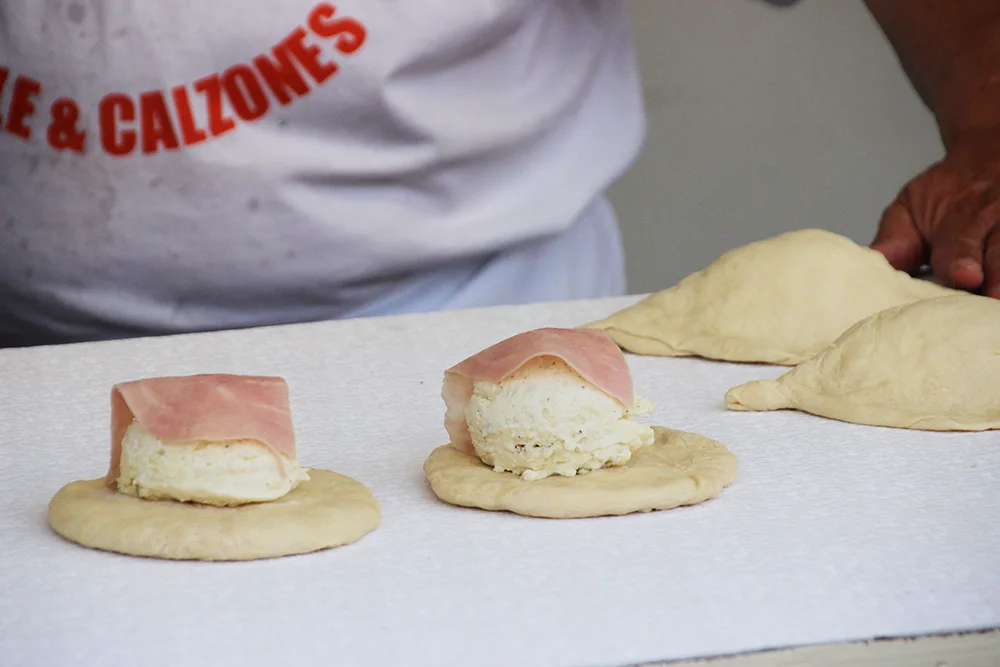
There are several rival sausage and pepper stands selling sandwiches made by stuffing onions, peppers, and sweet or hot sausage into Italian hero rolls. These stands usually have braciole, a piece of thin sliced beef or pork filled with stuffing, usually breadcrumbs, cheese, and prosciutto.
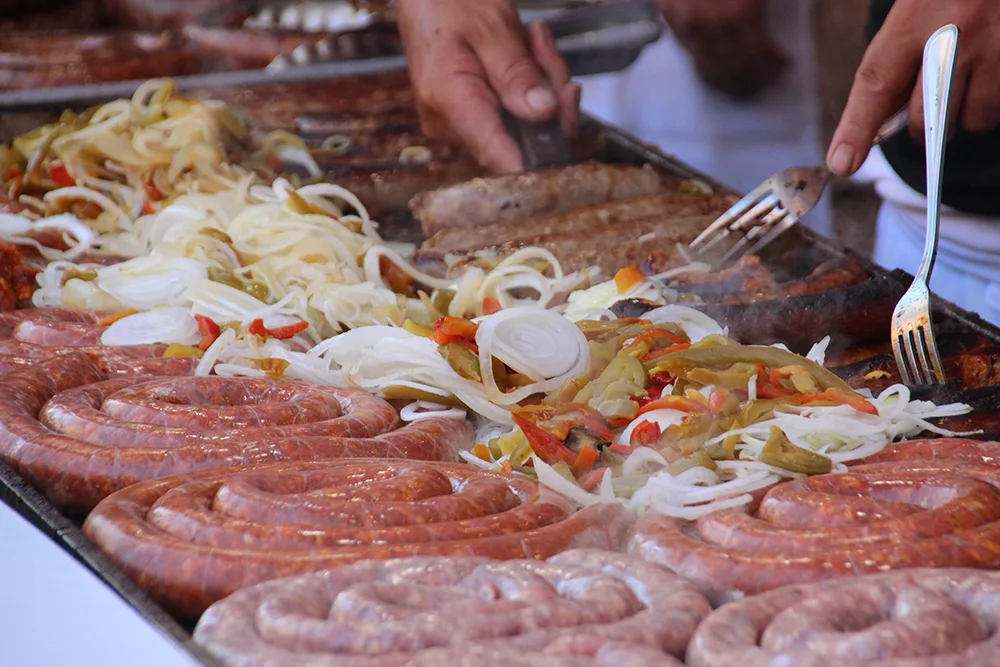
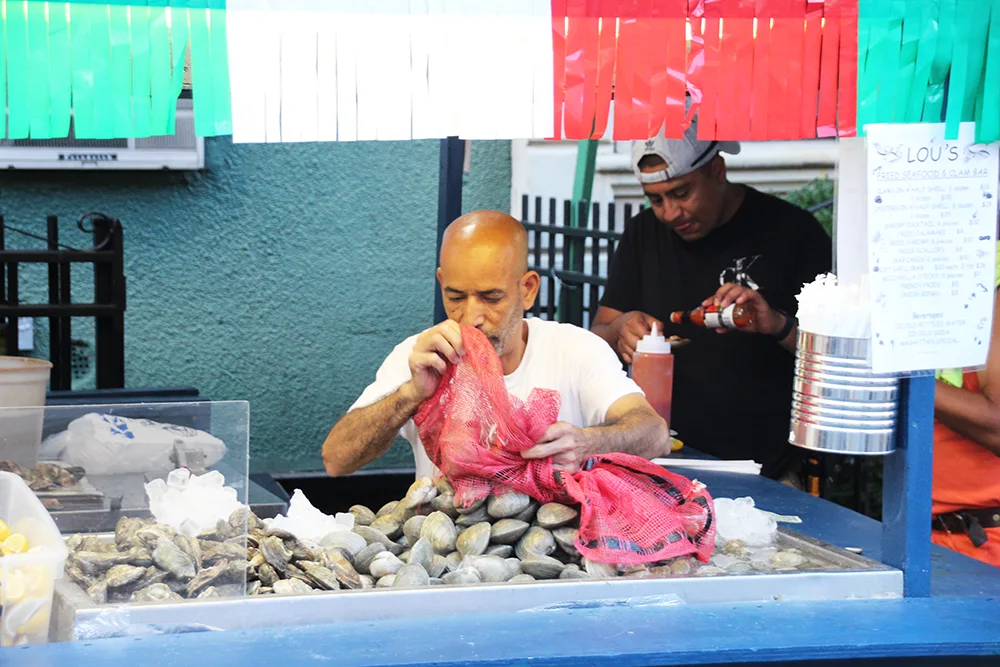
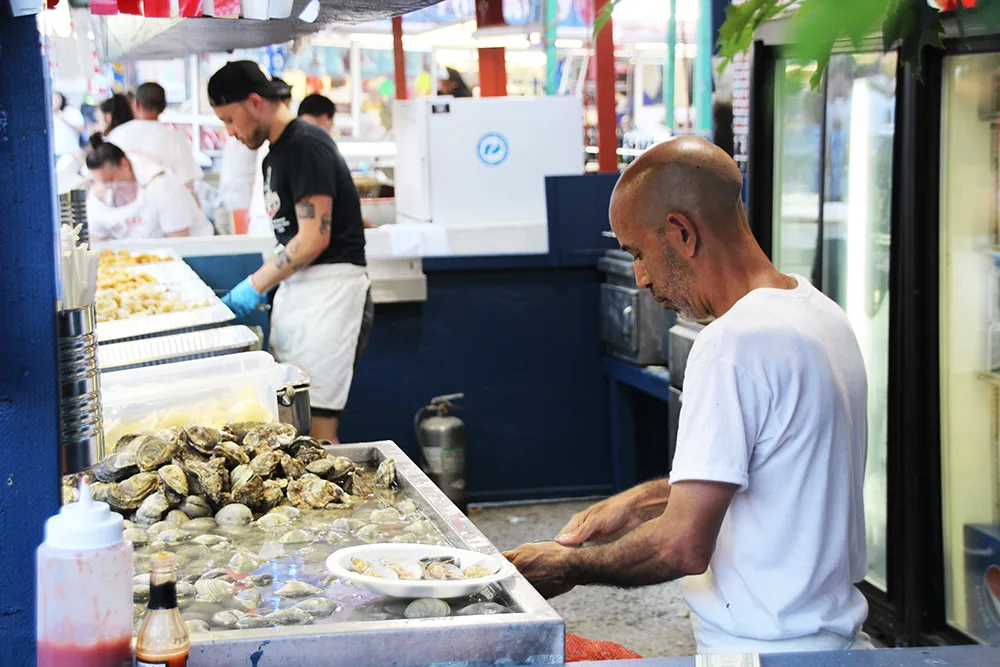
Seafood is a big part of the festival too. Clam bars offer fried seafood like scallops and calamari. Soft shell crabs are available, and other classics like shrimp cocktail. But the clam bars specialize in raw oysters and clams shucked to order.
Area restaurants get in the food game as well serving pasta dishes, chicken parmigiana, and eggplant rollatini.
There are less Italian influenced food vendors too, featuring ethnic foods found across Brooklyn and drinks like fresh squeezed lemonade. There are street vendors selling cigars and Italian American religious and cultural iconography. The organization behind the feast sells shirts and other branded merchandise.
Our Lady of Mount Carmel sits at the center of the festival, with the stairs a common place to meet friends or sit and snack on zeppole. The church also has restrooms, and for risk takers, the basement of the building hosts a casino.
Live music is part of the feast too, with big band favorites and Italian American singers. The giglio dance, the lift, is the main event along with a children’s lift and old-timers lift. The organization now has more than 325 paranza – the men who lift the structure. There is a parade and religious services, just in case anyone forgot the celebration honors a Catholic saint.
The neighborhood around the church has changed over the years. Williamsburg was once more than half Italian, but that has dwindled to less than a quarter, the New York Times reported in 2019. Lifting the tower had at one time been an honor handed down from father to son, more recently the organization has opened up to involve new members. While the neighborhood might be changing, attendance in recent years has topped 100,000.
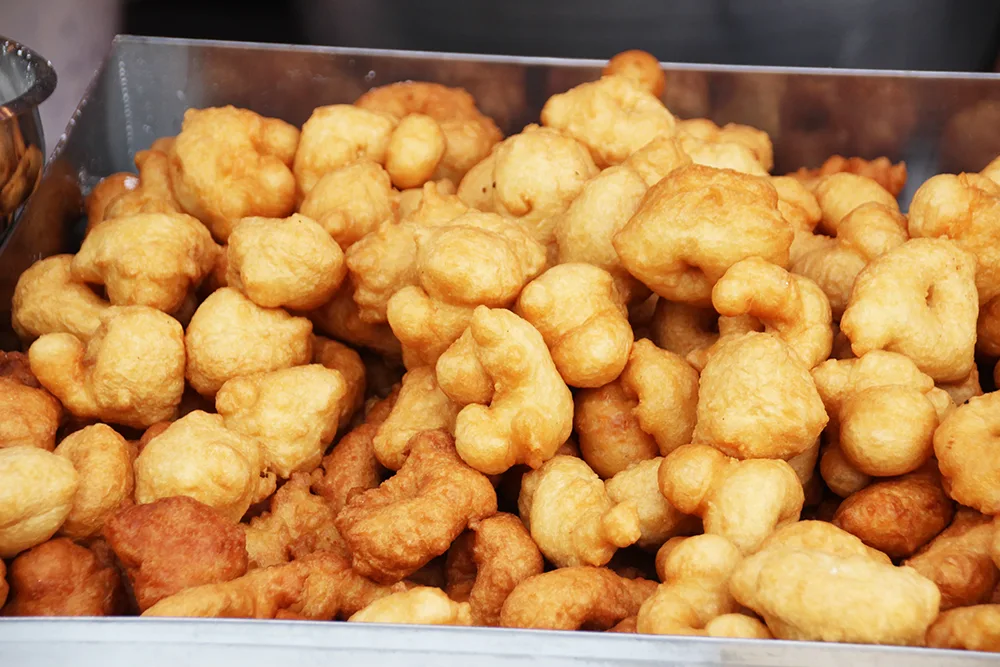
Attend a Feast
OLMC Feast
Williamsburg, Brooklyn
July 10 to July 21, 2024
Website
Instagram
Giglio Feast of East Harlem
Manhattan
August 8th to 11th, 2024
Faceboook
Sons of San Paolino di Nola
West Hempstead, New York
Annually in June
Website
Festa dei Gigli a Nola
Nola, Italia
Annually, June 22

